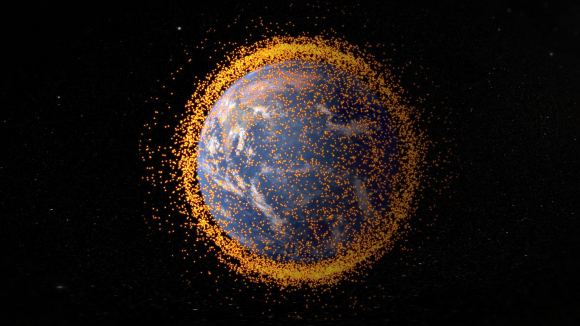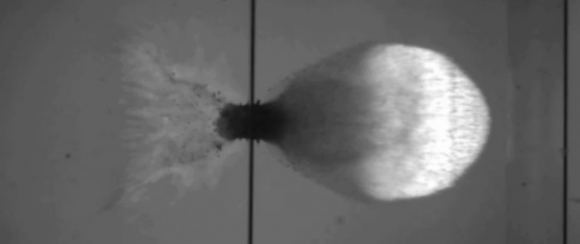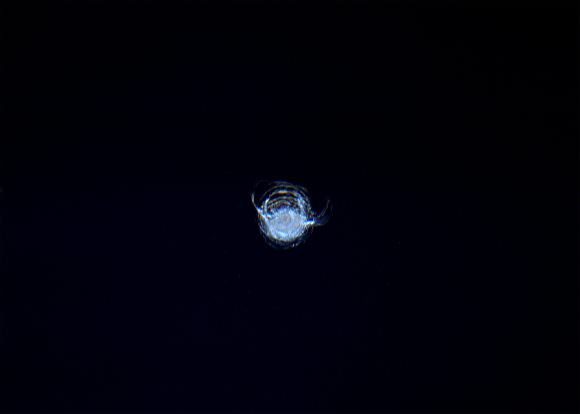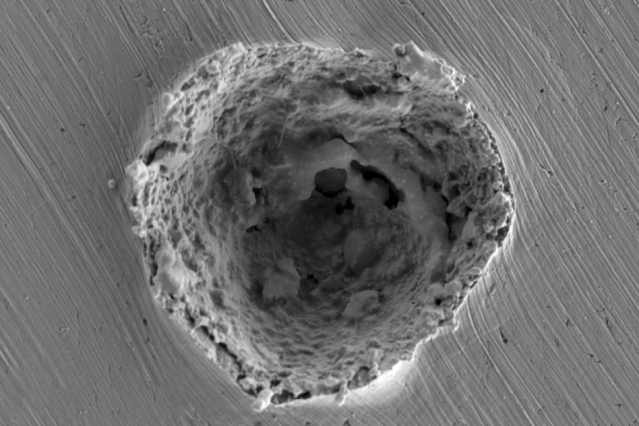If there’s one thing that decades of operating in Low Earth Orbit (LEO) has taught us, it is that space is full of hazards. In addition to solar flares and cosmic radiation, one of the greatest dangers comes from space debris. While the largest bits of junk (which measure more than 10 cm in diameter) are certainly a threat, the real concern is the more than 166 million objects that range in size from 1 mm to 1 cm in diameter.
While tiny, these bits of junk can reach speeds of up to 56,000 km/h (34,800 mph) and are impossible to track using current methods. Because of their speed, what happens at the moment of impact has never been clearly understood. However, a research team from MIT recently conducted the first detailed high-speed imaging and analysis of the microparticle impact process, which will come in handy when developing space debris mitigation strategies.
Their findings are described in a paper that recently appeared in the journal Nature Communications. The study was led by Mostafa Hassani-Gangaraj, a postdoctoral associate with MIT’s Department of Materials Science and Engineering (DMSE). He was joined by Prof. Christopher Schuh (the DMSE department head), as well as staff researcher David Veysset and Prof. Keith Nelson of MIT’s Institute for Soldier Nanotechnologies.

Microparticle impacts are used for a variety of everyday industrial applications, ranging from applying coatings and cleaning surfaces to cutting materials and sandblasting (where particles are accelerated to supersonic speeds). But until now, these processes have been controlled without a solid understanding of the underlying physics involved.
For the sake of their study, Hassani-Gangaraj and his team sought to conduct the first study that examines what happens to microparticles and surfaces at the moment of impact. This presented two major challenges: first, the particles involved travel at upwards of one kilometer per second (3600 km/h; 2237 mph), which means that impact events take place extremely quickly.
Second, the particles themselves are so tiny that observing them requires highly sophisticated instruments. To address these challenges, the team relied on a microparticle impact testbed developed at MIT, which is capable of recording impact videos at up to 100 million frames per second. They then used a laser beam to accelerate tin particles (measuring about 10 micrometers in diameter) up to speeds of 1 km/s.
A second laser was used to illuminate the flying particles as they struck the impact surface – a sheet of tin. What they found was that when particles are moving at speeds above a certain threshold, there is a brief period of melting at the moment of impact, which plays a crucial role in eroding the surface. They then used this data to predict when the particles will bounce away, stick, or knock material off of a surface and weaken it.

In industrial applications, it is widely assumed that higher velocities will lead to better results. These new findings contradict this, showing that there is a region at higher velocities where the strength of a coating or the surface of a material declines instead of improves. As Hassani-Gangaraj explained in an MIT press release, this study is important because it will help scientists predict under what conditions erosion from impacts will take place:
“To avoid that, we need to be able to predict [the speed at which the effects change]. We want to understand the mechanisms and exact conditions when these erosion processes can happen.”
This study could shed light on what happens in uncontrolled situations, like when microparticles strike spacecraft and satellites. Given the growing problem of space debris – and the number of satellites, spacecraft and space habitats that are expected to be launched in the coming years – this information could play a key role in the development of impact mitigation strategies.
Another benefit of this study was the modelling it allowed for. In the past, scientists have relied on postmortem analyses of impact tests, where the test surface was studied after the impact had taken place. While this method allowed for damage assessments, it did not lead to a better understanding of the complex dynamics involved in the process.

In contrast, this test relied on high-speed imaging that captured the melting of the particle and surface at the very moment of impact. The team used this data to develop a general model to predict how particles of a given size and given speed would respond – i.e. would they bounce off a surface, stick to it, or erode it by melting? So far, their tests have relied on pure metal surfaces, but the team hopes to conduct further tests using alloys and other materials.
They also intend to test impacts at a variety of angles, rather than the straight impacts they have tested so far. “We can extend this to every situation where erosion is important,” said David Veysset. The aim is to develop “one function that can tell us whether erosion will happen or not. [That could help engineers] to design materials for erosion protection, whether it’s in space or on the ground, wherever they want to resist erosion,” he added.
This study and its resulting model are likely to come in very handy in the coming years and decades. It is widely accepted that if left unchecked, the problem of space debris will become exponentially worse in the near-future. For this reason, NASA, the ESA and several other space agencies are actively pursuing “space debris mitigation“ strategies – which include reducing mass in high-density regions and designing craft with safe re-entry technologies.
There are also several ideas on the table for “active removal” at this point. These range from space-based lasers that could burn up debris and magnetic space tugs that would capture it to small satellites that could harpoon and deorbit it or push it into our atmosphere (where it would burn up) using plasma beams.
These and other strategies will be necessary in an age where Low Earth Orbit is not just commercialized, but also inhabited; not to mention serving as a stopover point for missions to the Moon, Mars, and deeper into the Solar System. If the space lanes are going to be busy, they must be kept clear!
Further Reading: MIT, Nature Communications

